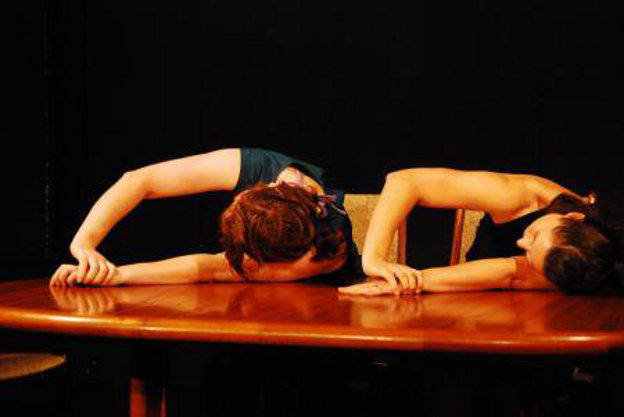Park Bench Theatre’s performance makes ample use of what they define as ‘intricate pedestrian gestures along with high energy contact work’. It does need a little explaining, but it is easy to understand once you see their choreography on the stage. As the two performers set out the dinner table and chairs at the beginning of the piece there’s a whirlwind of small adjustments, broken by wild movements of a chair from one position at the table to another, as well as stand-offs between the two dancers when one wants the other’s space.
The piece initially relies on the alternating friction and cooperation between the two performers, and there were times when this fairly long introduction needed a little more pace or variety to keep the interest going. It did however segue into a more intricate set of portraits of the diners at the dinner party, including one of the dancers putting a hilarious new spin on arms reaching round to portray an embrace. The show is based on an entertaining conceit, if not a thoroughly gripping one, and both the dancers have a good comic touch in their silent mime, their faces expressing their feelings during the more naturalistic sections. Within the more abstract pieces, they flow between body poses of bored or excited dinner party guests. The company also successfully carry a narrative – going from the fidgety worry about chairs and guests about to arrive, to the looser, slightly inebriated excess of a boozy dinner party and its aftermath.
Perhaps they could have made more use of the table which sits centre stage and dominates the eye, as it limited the amount of movement and stage they could cover. But there again this would have worked against their manifesto of elevating the small gestures of the everyday world and inhabiting it through dance. There’s a tension between wanting to stay small and interesting by abjuring wider movement and spectacle, and the loss of impact and stage presence that this brings with it. The Nightingale was just about small enough to allow this to work, but the piece might have benefited from being performed in the round, as the dancers felt a little distant from the audience, even from the front row.

